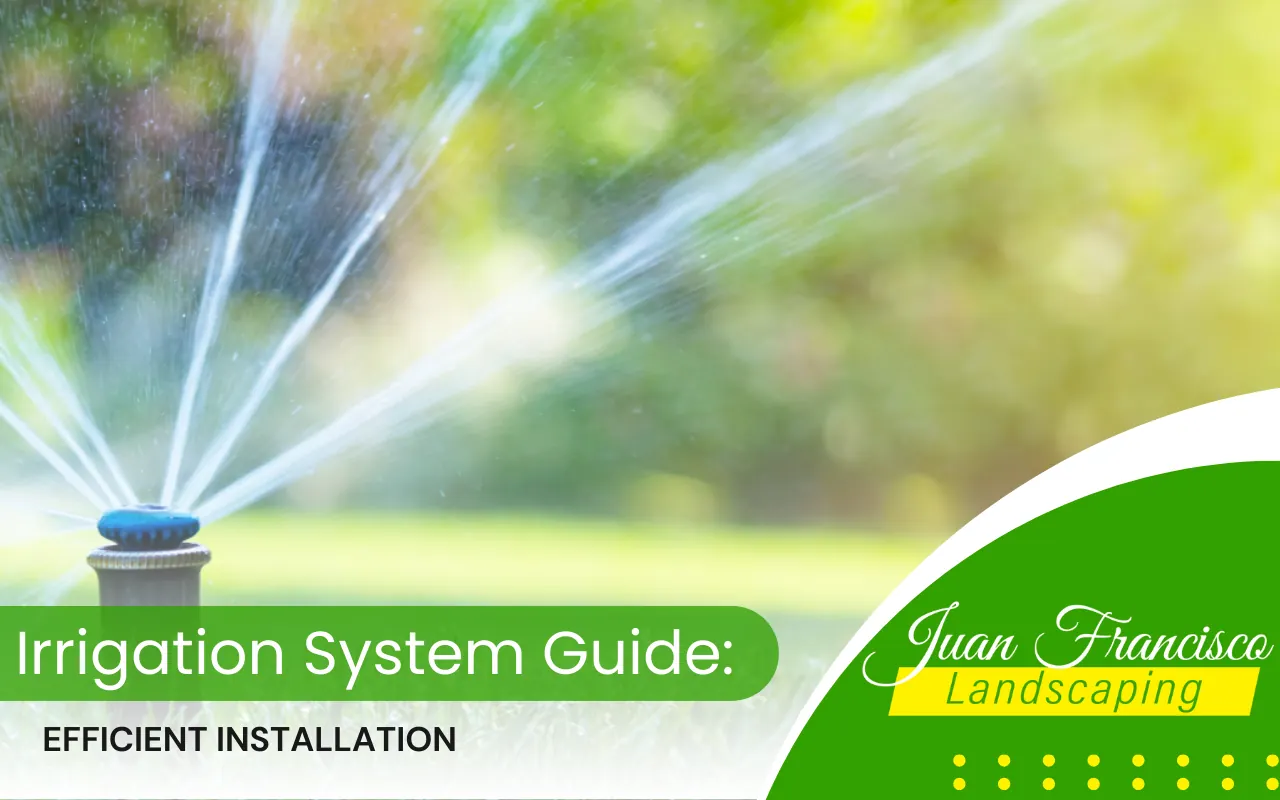
Irrigation System Guide: Efficient Installation
Are you struggling with dry patches on your lawn or excessive water bills? A well-installed irrigation system can transform your landscape, making it healthier and more efficient. Welcome to our irrigation system guide, where we simplify the process of choosing, installing, and maintaining an efficient irrigation system. This guide will help you find an efficient automated system, a low-maintenance setup, or a solution to enhance curb appeal. Let’s explore the best practices for keeping your garden thriving while conserving water.
Unlocking the Secrets of Efficient Irrigation
A well-designed irrigation system is the key to a vibrant garden and water conservation. Below, we cover the best systems, installation techniques, and maintenance strategies to maximize efficiency.
Choosing the Right System for Your Garden
Before installation, selecting the right irrigation system is crucial. Each option caters to different needs:
Understanding Different Types of Irrigation Systems
- Drip Irrigation – Best for flower beds, vegetable gardens, and shrubs. This system delivers water directly to plant roots, reducing evaporation and runoff.
- Sprinkler Systems – Ideal for lawns and large landscapes. With customizable spray patterns, sprinklers distribute water evenly over broad areas.
- Soaker Hoses – Simple yet effective. These hoses are great for plant beds and require minimal setup.
Which System is Right for You?
- For automated efficiency -Smart drip irrigation with sensors to control water usage.
- For a low-maintenance approach -Soaker hoses or programmable sprinklers to simplify watering.
- For enhancing curb appeal -Sprinkler systems with zoning to highlight landscaping.
Installation Steps Simplified
Mapping Your Garden’s Layout
Before installation, assess your garden:
- Identify areas that need more water (grass, flower beds) vs. less (drought-resistant plants).
- Mark high-sun and shaded areas to create custom watering zones.
- Check your soil type—sandy soil drains fast, while clay soil retains moisture.
Installing Components: Step-by-Step
- Lay Out the Main Hose Position the hose strategically to avoid overwatering or dry spots. Ensure no unnecessary overlap in watering zones.
- Connect the Emitters or Sprinklers Attach drip emitters, sprayers, or sprinkler heads based on your plants’ needs.
- Adjust Water Pressure & Flow Rate Install a pressure regulator to prevent leaks and uneven watering.
- Test the System Before Finalizing Before burying pipes or securing hoses, run a test cycle to check for leaks, misalignment, or uneven coverage.
Maintenance Tips for Longevity
A well-maintained irrigation system lasts longer and saves money.
Regular Checks
- Inspect for clogs, leaks, or misaligned sprinklers.
- Look for uneven watering patterns, which may indicate blockages.
- Clean filters and nozzles monthly.
Seasonal Adjustments
- Winterizing the system prevents pipe bursts in cold climates.
- Adjust watering schedules based on the season. Plants need less water in cooler months and more in warmer months.
- Use programmable timers to automate seasonal changes.
Water Efficiency Tactics
Optimizing Water Flow
- Match water flow rate to your soil type:
- Sandy soil requires slower watering to prevent runoff.
- Clay soil benefits from short, frequent watering to avoid puddling.
- Avoid watering during peak sun hours—early morning or late evening is best.
Zoning Your Irrigation
Custom watering zones ensure each area gets the right amount of water.
- Lawns need deep, infrequent watering.
- Flower beds require gentle, frequent watering.
- Shady areas need less water than sun-exposed spots.
Smart irrigation controllers can adjust zones based on weather data.
Eco-Friendly Practices
Utilizing Rainwater
Collecting rainwater is an effective way to supplement an irrigation system.
- Install rain barrels to collect chemical-free water.
- Direct rainwater runoff to garden beds.
- Combine with drip irrigation for a self-sustaining system.
Choosing Sustainable Materials
- Opt for recycled hoses and eco-friendly pipes.
- Use water-efficient emitters to reduce waste.
- Invest in long-lasting, durable components to minimize replacement.
Legal Considerations
Understanding Local Regulations
Before installing an irrigation system, check water restrictions in your area.
- Some cities limit daytime watering due to evaporation concerns.
- Permits may be required for underground piping.
- Certain areas offer rebates for water-efficient irrigation.
Check local government websites for compliance.
Enhancing Aesthetic Appeal
An irrigation system does not have to interfere with the landscape design.
- Subsurface drip irrigation hides tubing beneath the soil.
- Decorative rock mulch conceals irrigation pipes while retaining moisture.
- Micro-sprayers blend with landscape designs for a seamless look.
Maximize Your Garden’s Potential with Smart Irrigation
A well-designed irrigation system is essential for maintaining a healthy, water-efficient landscape. With the right setup, you can reduce water waste, simplify maintenance, and enhance your outdoor space. This Irrigation System Guide has provided essential insights into selecting, installing, and maintaining an efficient system tailored to your needs. For expert guidance and customized solutions, explore the best irrigation options available. Contact us today to get started with a system that ensures long-term sustainability and effectiveness.
